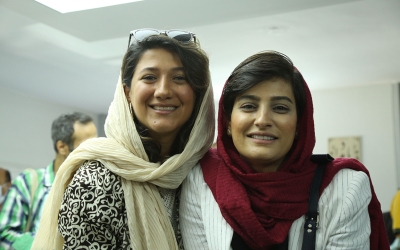Iranian press review: Prominent journalist sentenced over open letter

Veteran journalist sentenced over open letter
Prominent Iranian journalist Keyvan Samimi has been sentenced to another term of six years in prison over a letter he wrote from jail during a previous incarceration.
Samimi, 75, a veteran reporter and lifelong activist, has been accused of "collusion and propaganda against the establishment".
He lost an appeal at a branch of the Islamic Revolutionary Court on Sunday, which confirmed his sentence, his lawyer Mostafa Nili told the Shargh daily.
"This case had been brought against him [Samimi] due to his [political] activities during his previous incarceration," Nili said.
New MEE newsletter: Jerusalem Dispatch
Sign up to get the latest insights and analysis on Israel-Palestine, alongside Turkey Unpacked and other MEE newsletters
Sammi's last prison term began in November and ended in January. During his imprisonment, he wrote an open letter in which he blamed the judicial authorities for the death of the imprisoned writer and poet, Baktash Abtin, aged 48.
In 2022, while Abtin was serving a six-year sentence, his need for medical attention was allegedly disregarded. Eventually, he was transferred to a hospital but died in January that year.
Abtin's death sparked anger among activists and political prisoners, and Samimi, in his open letter, demanded that those responsible for his death be brought to justice.
Meanwhile, Samimi's legal representative disclosed that his client had been subject to trial within another division of the Islamic Revolutionary Court relating to statements he made in April calling for nonviolent resistance to topple the Iranian government.
Samimi has been arrested several times since 2009 and has served two sentences of six and a half and three years in prison.
He also experienced imprisonment before the 1979 revolution, as he actively fought against the autocracy of Iran's last monarch, the Shah.
US dollars used to rent and buy luxury houses
Property owners in Tehran and major Iranian cities are increasingly using the US dollar instead of the local currency when leasing and selling luxury residences in order to safeguard themselves against the relentless surge in inflation.
Before the current economic turmoil in Iran, the only currency used in the country for daily transactions was the Iranian rial.
But this has changed since the US unilaterally withdrew from the 2015 nuclear accord with Iran and the country's current economic crisis began.
At the time, one US dollar was equal to 60,000 rials in unofficial markets. On Wednesday, one greenback was sold for over 490,000 rials.
"As the national currency loses value, foreign currencies are replacing it in the housing market,” the Rooz-e No website said. “Using those currencies is illegal, but investigations show that owners of lavish penthouses and apartments exclusively accept the US dollar.”
Rooz-e No added that this phenomenon is more common among real estate owners who live abroad and rent their apartments in Iran.
According to this report, between 2015 and 2022, accommodation costs in Tehran witnessed a staggering 963 percent surge.
This increase in the use of the US dollar inside Iran coincides with what the establishment's outlets widely hailed as "the government's success in eliminating the US dollar from Iran's economic framework".
Over 900,000 students drop out
A total of 911,727 students left school during the last academic year, the Islamic Parliament Research Centre has said according to Etemad Online.
The Farsi outlet said the dropout rate has surged by 26 percent over the past six years.
It added that, despite parliamentary report, the education ministry claimed that the number of dropouts in primary schools had remained constant over the past five years.
The primary reason for dropping out of school is increased poverty among ordinary citizens, according to Etemad. "Seventy percent of dropouts have occurred within the lower classes of society and low-income households," the website wrote.
The report further elaborated that the highest rates of school dropouts were observed in the provinces of Sistan and Baluchistan, Khorasan Razavi, Tehran, Khuzestan, and Kerman.
Sistan and Baluchistan, alongside Kerman, rank among Iran's most disadvantaged provinces.
Hossein Zehi, a representative from Sistan and Baluchistan, said the province, with a population of 2.77 million, was wrestling with a significant shortage of 11,000 teachers, while more than 150,000 school-age children were not enrolled in schools.
*Iranian press review is a digest of news reports not independently verified as accurate by Middle East Eye.
Middle East Eye delivers independent and unrivalled coverage and analysis of the Middle East, North Africa and beyond. To learn more about republishing this content and the associated fees, please fill out this form. More about MEE can be found here.






